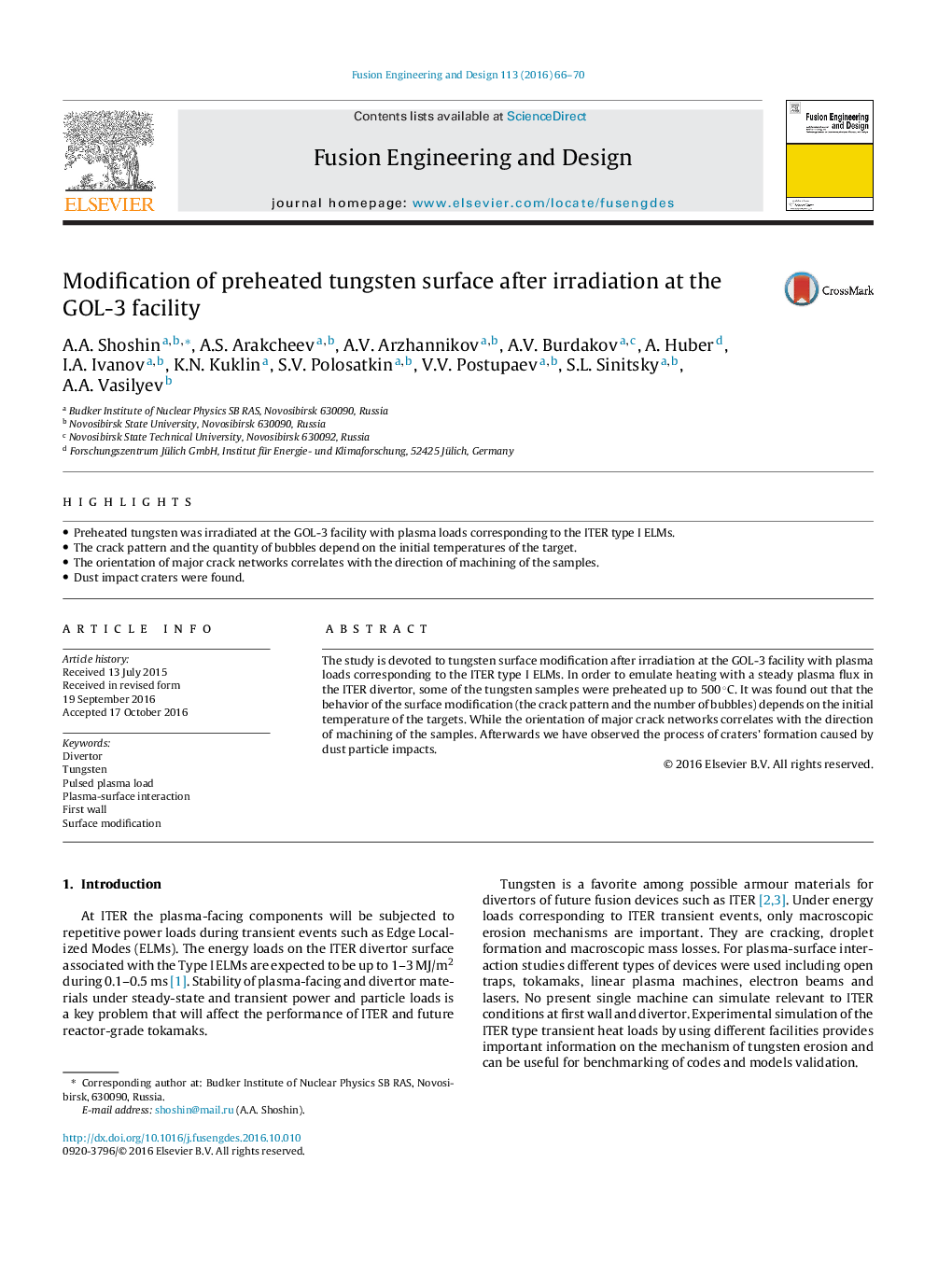| Article ID | Journal | Published Year | Pages | File Type |
|---|---|---|---|---|
| 4921219 | Fusion Engineering and Design | 2016 | 5 Pages |
Abstract
The study is devoted to tungsten surface modification after irradiation at the GOL-3 facility with plasma loads corresponding to the ITER type I ELMs. In order to emulate heating with a steady plasma flux in the ITER divertor, some of the tungsten samples were preheated up to 500 °C. It was found out that the behavior of the surface modification (the crack pattern and the number of bubbles) depends on the initial temperature of the targets. While the orientation of major crack networks correlates with the direction of machining of the samples. Afterwards we have observed the process of craters' formation caused by dust particle impacts.
Related Topics
Physical Sciences and Engineering
Energy
Energy Engineering and Power Technology
Authors
A.A. Shoshin, A.S. Arakcheev, A.V. Arzhannikov, A.V. Burdakov, A. Huber, I.A. Ivanov, K.N. Kuklin, S.V. Polosatkin, V.V. Postupaev, S.L. Sinitsky, A.A. Vasilyev,
